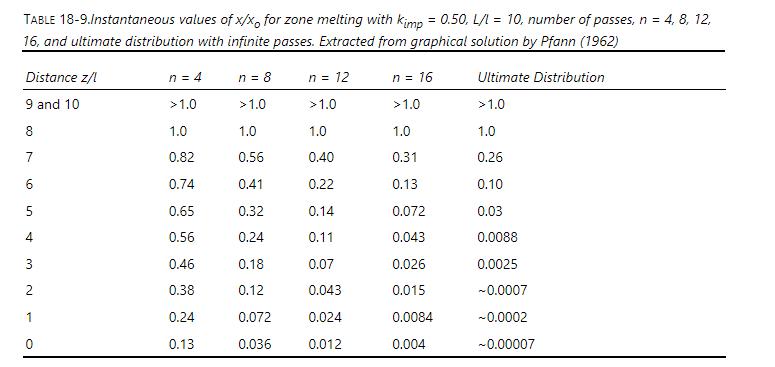a. In Table (18-8), the column labeled (Delta mathrm{G} / Delta mathrm{t}), which is a measure of
Question:
a. In Table \(18-8\), the column labeled \(\Delta \mathrm{G} / \Delta \mathrm{t}\), which is a measure of the acceleration of G, was calculated from a larger spreadsheet table with values spaced at \(2 \%\) from \(0 \%\) to \(100 \%\) of \(\% \mathrm{t}_{\mathrm{C}, \text { max }}\). Create this entire spreadsheet and calculate the values of \(\Delta \mathrm{G} / \Delta \mathrm{t}\).
b. When more than \(90 \%\) of the total changes in \(\mathrm{T}_{\mathrm{C}}\), Const2, G, and \(\mathrm{U}\) have occurred, the pseudo-steady-state assumption becomes reasonable. Use the enhanced Table 18-8 spreadsheet with rows at intervals of \(2.0 \%\) of \(\mathrm{t}_{\mathrm{C}, \text { max }}\) to determine when the pseudo-steadystate assumption is probably accurate, and add one or two rows with \(1 \%\) change of \(\mathrm{t}_{\mathrm{C}, \max }\) to obtain more accuracy.
c. Determine the arithmetic average and the geometric average of \(\mathrm{G}\) from numbers at 0,10 , \(20, \ldots, 90,100 \%\) of max crystal thickness.
Numbers in Table 18-8 are correct, but not enough data are given in Table \(18-8\) to obtain the solution for most rows. Calculations were done with a \(2 \%\) change in \(\%\) of \(\mathrm{t}_{\mathrm{C}, \text { max }}\) for all of the entries from \(0 \%\) to \(100 \%\), and with a \(1 \%\) change close to the solution (see part b).



Step by Step Answer:

Separation Process Engineering Includes Mass Transfer Analysis
ISBN: 9780137468041
5th Edition
Authors: Phillip Wankat





